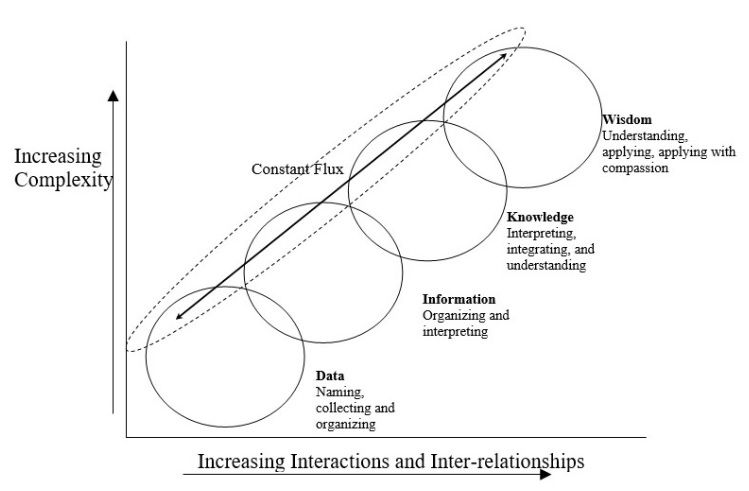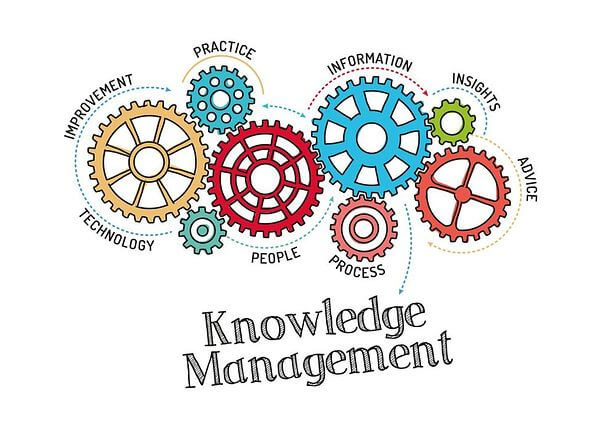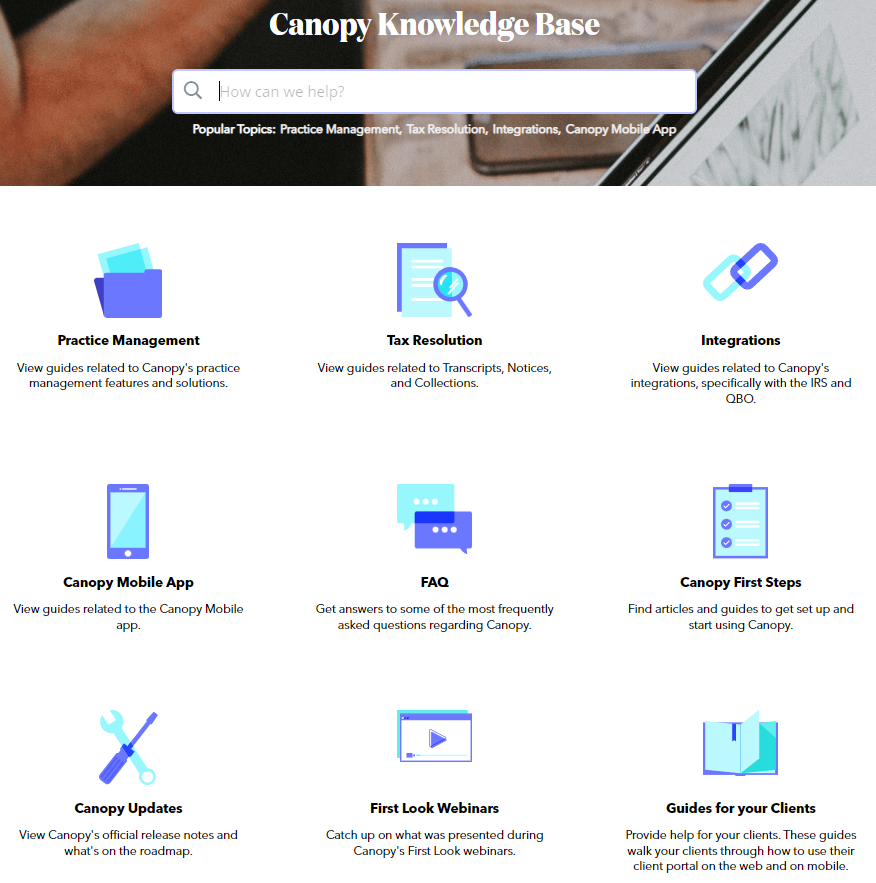
If a tree falls in a forest and no one is around to hear it, does it make a sound?
This age-old philosophical question echoes the conundrum of knowledge within a business environment. The vast reservoir of experiences, insights, and understandings an organization holds carries value only if it can be leveraged, applied, and shared. Without a proper system to catalog and disseminate it, this knowledge is like the world's largest library without an index, or indeed, a silent tree falling unheard in the forest.
At the heart of this issue lies a critical question every business, academic institution, and intellectual entity grapples with: What exactly does knowledge look like, and how does its multifaceted nature influence its management? To provide some context, consider the immense proliferation of data in today's digital age. Every second, countless bytes of data are generated around the globe - from social media posts to scientific research, from customer transactions to satellite imagery.
However, raw data alone, no matter how voluminous, does not constitute knowledge. It is the ability to sift through this digital deluge, converting raw data into meaningful information, and further refining it into actionable knowledge, that encapsulates the art and science of knowledge management (KM).
In this post, we'll take a look into what knowledge is as well as examine the seven different types of knowledge, each with its unique role and significance. Through this exploration, we aim to shed light on the power of knowledge in driving organizational growth, innovation, and competitive advantage.
What is Knowledge?
In the context of knowledge management, knowledge isn't simply a collection of data or information. Rather, it is a fluid mix of framed experiences, values, contextual information, and intuition that a person or organization develops over time. Knowledge serves to enhance individual and organizational understanding, performance, and innovation, transcending the basic understanding provided by raw data and interpreted information.

To truly appreciate what knowledge entails, we can view data, information, and knowledge as points on a continuum, as suggested by the DIKW (Data, Information, Knowledge, Wisdom) model.
- Data: These are the raw, unprocessed facts and figures devoid of any added interpretation or analysis. For instance, the numbers "60" and "70" are data.
- Information: This is data that has been given meaning through interpretation. For example, if we understand that these numbers represent the ages of two people, we've transformed the data into information.
- Knowledge: This goes a step further than information. It involves applying the data and information in a meaningful way. If we know that these two people are a father and son, we have turned the information into knowledge.
This transformation, from raw data to actionable knowledge, is at the heart of KM. It's a process that unveils the latent value in data, morphing simple figures into powerful tools for understanding, decision-making, and innovation.
(Note: Wisdom is often viewed as the pinnacle in the DIKW hierarchy. Going beyond knowledge, wisdom involves understanding the fundamental principles underlying the knowledge and using this to make sound judgments and decisions. For instance, knowing the best way to nurture the relationship between the father and son, based on understanding their ages and familial relationship, can be seen as wisdom. We'll save a deeper discussion on this topic for a future blog post).
Types of Knowledge
Having established the idea of knowledge and its relationship with data and information, we're now ready to journey through the multifaceted landscape of knowledge types.
This realm is diverse, encapsulating everything from the unspoken intuitions of tacit knowledge and the tangible insights of explicit knowledge, to the intricate subtleties of embedded knowledge, the unspoken understandings of implicit knowledge, and the functional guides of procedural knowledge. Not to forget the critical role of declarative knowledge in setting the stage for organizational goals, and the crucial insights offered by strategic knowledge in decision-making.
As we navigate these diverse knowledge types, we'll uncover their unique roles in fostering innovation, growth, and competitive advantage within a business.
1. Tacit Knowledge
Tacit knowledge is the know-how and insights that we carry within ourselves, which is usually challenging to document and share. You know that feeling when you're driving and you sense a car is about to change lanes without any signal? That's tacit knowledge - it's intuitive and often hard to articulate.
In a business setting, tapping into employees' tacit knowledge can unveil a treasure trove of insights, whether it's a unique method for improving customer satisfaction or a knack for diffusing tricky situations. Despite its elusive nature, finding ways to share tacit knowledge can elevate a company's performance and drive innovation.
Examples of Tacit Knowledge:
- A seasoned product manager who has an uncanny ability to predict market trends.
- A customer service rep with a knack for turning disgruntled customers into loyal fans.
- A veteran developer's intuition for identifying potential bugs in a new software release.
- A team leader's skill in motivating and rallying her team during challenging projects.
2. Explicit Knowledge
Explicit knowledge is like an open book — it's information that can be easily recorded, transmitted, and understood by others. This is the type of knowledge that thrives in manuals, procedures, data reports, and whitepapers. The efficiency of business operations largely relies on the effective communication and organization of explicit knowledge.
Examples of Explicit Knowledge:
- A comprehensive training manual for new hires.
- A document outlining the company's code of conduct.
- A meticulously compiled customer database.
- A checklist used by the event planning team to ensure every detail is addressed.
3. Embedded Knowledge
Embedded knowledge refers to the knowledge that is locked in processes, products, culture, routines, artifacts, or structures. In other words, embedded knowledge represents the practical application or embodiment of both explicit and tacit knowledge within an organization or system. It's the knowledge that's literally "embedded" into the very fabric of the organization.
For example, consider a company's manufacturing process. The process itself contains embedded knowledge - the sequence of steps, the machinery used, and the quality checks carried out, all embody accumulated knowledge. Similarly, a company's culture, its unique way of doing things, and its established routines and protocols all represent embedded knowledge.
Examples of Embedded Knowledge:
- A company's unique manufacturing process that has been refined over the years for optimal efficiency.
- A sales methodology that the organization developed and honed over time, which combines market insights, best practices, and company-specific techniques.
- The culture of an organization, which reflects learned behaviors, shared values, and unspoken rules accumulated over the organization's history.
- The design of a company's flagship product, which has evolved through various iterations based on customer feedback, market trends, and technological advancements.
- An AI system that has been trained on large amounts of data, enabling it to make predictions or perform tasks based on the patterns it has learned.
Embedded knowledge is vital because it forms the backbone of an organization's operations and differentiates the organization from its competitors. However, because it's so deeply ingrained and often goes unnoticed, it can sometimes be challenging to identify and manage. This makes it all the more important for organizations to recognize and cultivate their embedded knowledge.
4. Implicit Knowledge
Implicit knowledge is the reading between the lines, the understanding of the unspoken rules. In the corporate world, this type of knowledge is integral to understanding the company culture and navigating the social dynamics of the workplace.
Examples of Implicit Knowledge:
- Understanding the company's unwritten dress code.
- Knowing the best time to approach your boss with a new idea.
- Discerning when to push for a sale or back off during a client meeting.
- Sensing the office mood and adapting communication accordingly.
5. Declarative Knowledge
Declarative knowledge is about facts. It's the knowledge of what things are, and it's usually straightforward to document and share. This type of knowledge sets the tone for your organizational goals and values, providing everyone with a clear understanding of what your organization is all about.
Declarative knowledge, while a category of its own, aligns closely with explicit knowledge. This is because it consists of facts that have been articulated and can be easily documented and shared, much like explicit knowledge
Examples of Declarative Knowledge:
- The company's mission statement.
- The definition of your target market.
- The detailed specifications of your product.
- The features of the latest software your team is using.
6. Procedural Knowledge
Procedural knowledge is the "doing" part. It's the step-by-step guide on how to perform a task. In a business setting, this type of knowledge is crucial for consistent performance and quality control.
Examples of Procedural Knowledge:
- The step-by-step process your customer service team follows when handling a complaint.
- The sequence of actions your developers undertake when debugging software.
- The sales pitch script that guides your sales team.
- The routine maintenance procedures for your manufacturing equipment.
7. Strategic Knowledge
Strategic knowledge is about the "why" and "when" of decision-making. It's knowing when to take specific actions and why those actions are beneficial. In the business world, strategic knowledge guides the company's direction and helps it navigate the marketplace effectively.
Examples of Strategic Knowledge:
- Understanding when to launch a new product.
- Deciding where to open a new store.
- Pivoting marketing strategies based on consumer behavior trends.
- Knowing why a specific marketing campaign worked or why a product failed.
The Impact of Knowledge Management
The key to effective knowledge management lies in understanding these various knowledge types and creating strategies to manage each one effectively. Knowledge management systems along with knowledge management software play a significant role in this process, serving a crucial function in managing, sharing, and leveraging different types of knowledge.
Explicit and Declarative Knowledge
Explicit and declarative knowledge are types of knowledge that can be easily documented, shared, and stored in a KMS. The challenge in managing this type of knowledge revolves around ensuring people have access to what they need, maintaining essential knowledge, and reviewing, updating, or discarding it as necessary. Despite some theoreticians considering explicit knowledge as less important, it forms the backbone of many KM initiatives, especially those driven by technology.
Tacit Knowledge
Tacit knowledge, being deeply rooted in personal experience, necessitates a different management approach. Emphasizing people and processes, KM initiatives must focus on capturing and utilizing this often elusive knowledge form. Such an approach often relies on nurturing a culture of knowledge sharing and collaboration. Encouraging the use of collaboration tools and social platforms can aid in the sharing and transfer of tacit knowledge.
Embedded Knowledge
For embedded knowledge, the management challenge is unique. Understanding and altering organizational culture and routines can be difficult. Successful management of embedded knowledge can involve embedding beneficial procedures or practices into the organizational structure or products. Here, IT can assist in mapping organizational knowledge and supporting processes and cultures, albeit with caution to prevent disruption.
Implicit Knowledge
When it comes to implicit knowledge, efforts should focus on creating an environment that encourages open communication and transparency. This might involve the use of social networking tools that promote informal interactions, or regular team building and social events where people can share and acquire implicit knowledge.
Procedural Knowledge
Managing procedural knowledge requires efficient documentation and updating of processes. Having a comprehensive and accessible repository where procedural guidelines are stored is crucial. A KMS can greatly aid in the creation, storage, and dissemination of procedural knowledge.
Strategic Knowledge
For strategic knowledge, a combination of data analysis tools and sharing platforms can be utilized. As strategic knowledge often involves interpreting data and making informed decisions, tools that allow for collaborative data analysis and decision making can be beneficial.
Wrap Up
Understanding the different types of knowledge is the first step in crafting a successful knowledge management strategy. Each type of knowledge has its unique role in driving organizational growth, innovation, and competitive advantage. Therefore, a well-rounded knowledge management approach should aim to capture, manage, and leverage all these types of knowledge.
If you're looking to enhance your knowledge management processes, Helpjuice's knowledge base software offers a robust and user-friendly platform that can cater to all your needs. From managing explicit and procedural knowledge to facilitating the sharing and collaboration required for tacit and implicit knowledge, Helpjuice has you covered.
So why wait? Start your free 14-day trial today and experience how seamless knowledge management can boost your business's performance.





